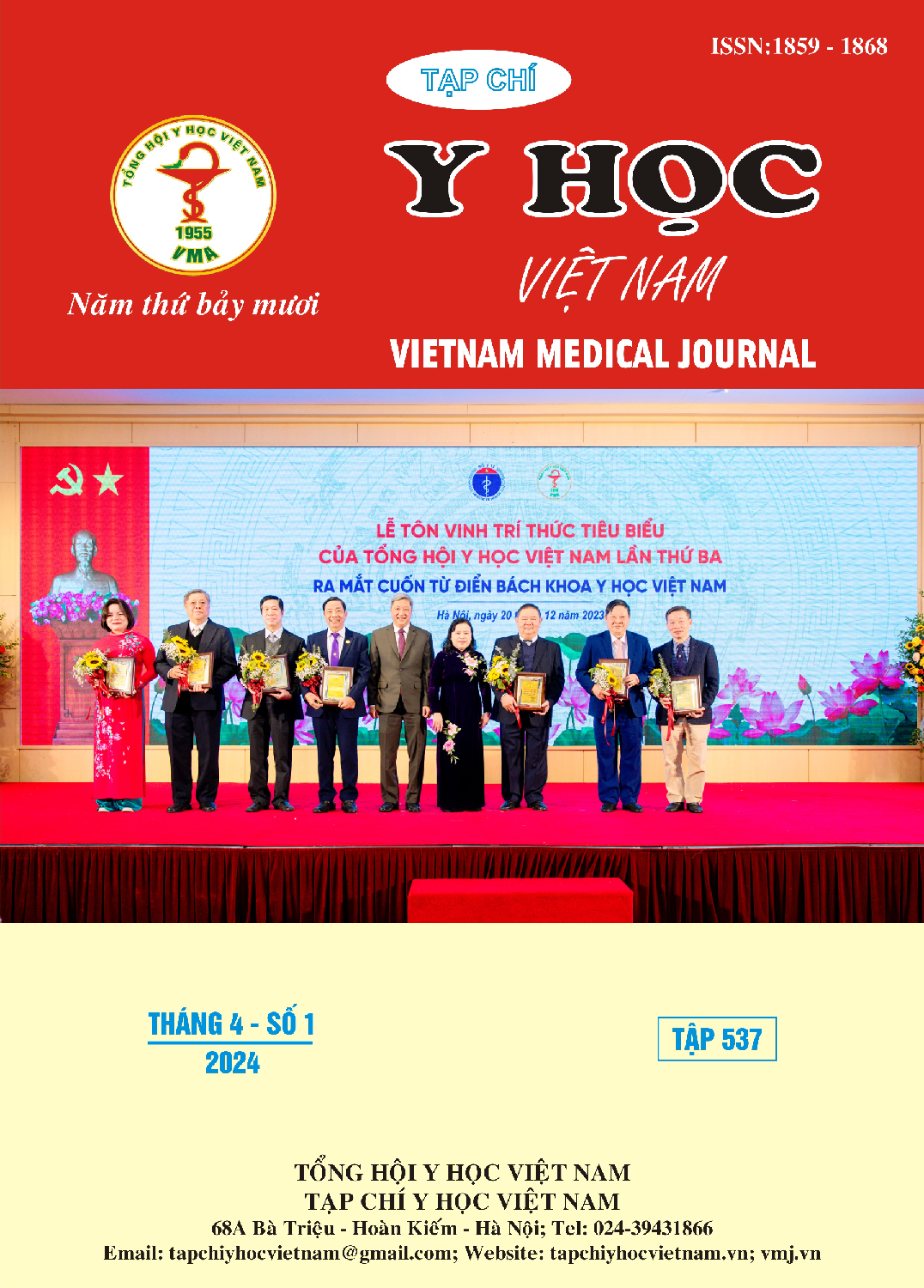ANALYSIS OF BACTERIOLOGICAL CHARACTERISTICS AND TREATMENT FOR K.PNEUMONIAE INFECTIONS AT CRITICAL CARE DEPARTMENT OF HUU NGHI HOSPITAL
Main Article Content
Abstract
Objectives: Analyze microbiological characteristics and treatment regimens for infections caused by K.pneumoniae in the Critical care department. Subjects: patients with K.pneumoniae treated at the Critical care department of Huu Nghi Hospital from June 1, 2021 to June 30, 2022. Method: prospective, descriptive. Result: respiratory specimens accounted for the most common 54.4%, ESBL positive rate of K.pneumoniae was 55.8%, and Carbapenem resistance was 19.1%, MIC value for Carbapenem was at the low level. Common empiric antibiotic regimens are: 3rd and 4th generation Cephalosporins or Piperacilline/Tazobactam in combination with Quinolones or Amiglycosides. After microbiological results are available, the rate of using Carbapenem and Colistin based regimens is about 50%. The baseline antibiotic dosing regimen is low to moderate as it must be adjusted for low glomerular filtration rate. The rate of treatment response is 70%, the survival rate is 55%. Conclusion: K.pneumoniae is mainly seen in respiratory specimens, the rate of ESBL birth and Carbapenem resistance tend to increase; reasonable basic antibiotic regimen, good response rate.
Article Details
Keywords
K.pneumoniae, ESBL, treatment protocol
References
2. Tô Hoàng Dương (2020), Phân tích đặc điểm lâm sàng, vi sinh và hiệu quả sử dụng kháng sinh trong điều trị nhiễm khuẩn do một số chủng Gram âm giảm nhạy cảm với kháng sinh Carbapenem tại bệnh viện Hữu Nghị, đề tài cơ sở
3. Thuyết B. T và cs (2021). Tỷ lệ kháng colistin của vi khuẩn Klebsiella pneumoniae đa kháng và kháng carbapenem phân lập tại Bệnh viện Trung ương Quân đội 108 từ tháng 01/2020 đến tháng 09/2020. Journal of 108 - Clinical Medicine and Phamarcy.
4. Stuart Johnson, et all (2022), Clinical Practice Guideline by the Infectious Diseases Society of America (IDSA) 2022. Clinical Infectious Diseases, Volume 73, Issue 5, 1 September 2022, Pages e1029–e1044,
5. Morrill H. J., Pogue J. M., et al. (2015), "Treatment Options for CarbapenemResistant Enterobacteriaceae Infections", Open Forum Infectious Diseases, 2(2), pp. ofv050-ofv050.
6. Rodríguez-Baño J., Gutiérrez-Gutiérrez B., et al. (2018), "Treatment of Infections Caused by Extended-Spectrum-Beta-Lactamase-, AmpC-, and Carbapenemase-Producing Enterobacteriaceae", Clin Microbiol Rev, 31(2), pp.
7. Stuart Johnson et all, Clinical Practice Guideline by the Infectious Diseases Society of America (IDSA) and Society for Healthcare Epidemiology of America (SHEA): 2022. Clinical Infectious Diseases, Volume 73, Issue 5, 1 September 2022, Pages e1029–e1044, https://doi.org/10.1093 /cid/ciab549


